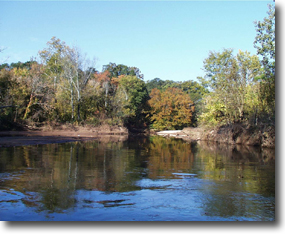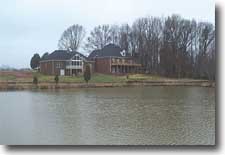County staff is responsible for receiving all reports of suspected and confirmed Illicit Discharges from within the
permitted area. Our staff endeavors to identify and resolve those Potential Illicit Discharges reported and follow
up with the effective and permanent elimination of any Illicit Discharges that are found to exist within the authorized
MS4 jurisdiction.
Call 911 for EMERGENCY reporting of MAJOR CHEMICAL SPILLS, a HAZARDOUS MATERIAL DISCHARGE, or an event causing a
catastrophic or disastrous impact requiring an IMMEDIATE or URGENT response by trained professionals. Situations
involving spills, leakage or discharge of pollutants observed by emergency responders require follow-up reporting
to SCDES and will, in turn, be reported to the Greenville County MS4 for tracking purposes.
Call 864.467.4610 to report all other observed Illicit Discharges located within the Cities of Mauldin,
Simpsonville, Fountain Inn, Travelers Rest and the other unincorporated areas of Greenville County. The City of
Greenville and the City of Greer are independently designated MS4 jurisdictions and Illicit Discharges within
those permitted areas should be reported to the respective municipality.
The person reporting an Illicit Discharge to LDD should be prepared to describe the type of illicit discharge observed
and provide accurate location and contact information for follow-up purposes. Basically, the concerned person reporting
the discharge should be able to generally classify the observed discharge as one of two types or categories of illicit
pollutant discharges, Acute (Class II) or Chronic (Class III). They should also be able to provide the time and date the
reported discharge was observed. Initially, each reported Class II or Class III discharge is logged into the Illicit
Discharge Reporting (login) System as a Potential Illicit Discharge until sufficient information can be documented to
properly identify the source and qualify the reported discharge as an actual Illicit Discharge requiring elimination.
Illicit Discharge Classifications
Class I – Catastrophic Discharge causing Imminent Danger
uch as a ruptured or overturned chemical or
fuel tank pouring dangerous quantities of hazardous or flammable materials into the stormwater conveyances or waterways.
This type of incident requires immediate attention by emergency response personnel who are "on-call" and qualified to deal
with related environmental impacts involving implementation of emergency notification/evacuation plans and the filing of
incident reports with the proper authorities.
Class II - Acute Pollutant Discharge
would be regarded a severe, but non-emergency situation indicating a less
urgent response. This type of Illicit Discharge would require a prompt response to investigate, document and require elimination of
the Illicit Discharge as prescribed by the SWMP. These types of Illicit Discharges would include non-life-threatening releases of untreated
industrial or domestic wastewater. They could include chemical, fuel or process leaks of noticeable, but non-lethal quantities that if left
unabated, could result in a fish kill or other intense impairment or damage to the environment.
Class III – Chronic Pollutant Discharge
indicates a less severe, more long-term deleterious effect or nuisance
to the environment, such as a grey water discharge, a septic tank malfunction, sewer service leakage, frequent overflow from a malfunctioning
grease trap, a discharge or placement of non-toxic nuisance material into the drainage system or waterway. These types of Illicit Discharges
alone have minimal impact to the environment, but left unchecked could collectively have a cumulative detrimental effect on the health of the
watershed.
Monitoring our Creeks and Rivers
Greenville County maintains and monitors a series of rain gauges and water monitoring stations along
the Reedy River and creeks and streams in other watersheds for overall Water Quality health.
Illegal Dumping Enforcement
The County has an ordinance in place that addresses
illegal dumping and litter. Enforcement of this ordinance is part of the County’s Phase I permit requirements.
The Environmental Services division of the Greenville County Sheriff’s Office Environmental Services staff pursues illegal
dumping of debris and other materials.
Notices

HOA Information - Detention Ponds
Detention ponds are used to safeguard the quality of urban water runoff from roads, parking lots,
residential neighborhoods, commercial areas, and industrial sites. Detention ponds help to reduce
peak stormwater runoff rates by providing temporary storage during storm events.
For detention pond education and maintenance tips, click here.
Single Family Residential Erosion/Sediment Control Standards
 This booklet contains standard plans and procedures sufficient for typical residential building construction;
it is not intended to address all circumstances. All projects that will clear, grade or otherwise disturb
the site must provide erosion and sediment control measures to prevent the transport of sediment from the
site to drainage facilities, streams, lakes, wetlands, adjacent properties, and streets. The primary objection
is perimeter control with best management practices (BMP's) being utilized to prevent erosion and minimize
sediment from leaving the site. Additionally, since streets are conduits for storm water, it is important to
keep mud and sediment off the streets. The building permit holder is responsible for ensuring that adequate BMP's
are in place and functioning until the construction project is brought to a close.
This booklet contains standard plans and procedures sufficient for typical residential building construction;
it is not intended to address all circumstances. All projects that will clear, grade or otherwise disturb
the site must provide erosion and sediment control measures to prevent the transport of sediment from the
site to drainage facilities, streams, lakes, wetlands, adjacent properties, and streets. The primary objection
is perimeter control with best management practices (BMP's) being utilized to prevent erosion and minimize
sediment from leaving the site. Additionally, since streets are conduits for storm water, it is important to
keep mud and sediment off the streets. The building permit holder is responsible for ensuring that adequate BMP's
are in place and functioning until the construction project is brought to a close.
Booklet (PDF - 1.85MB)